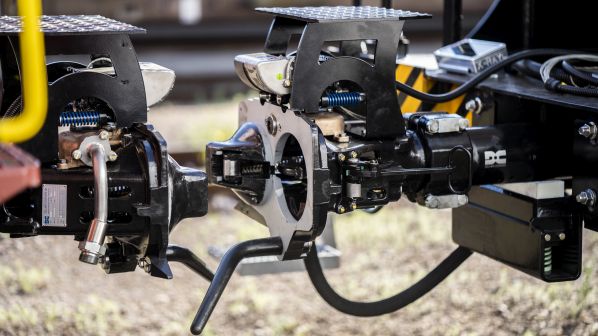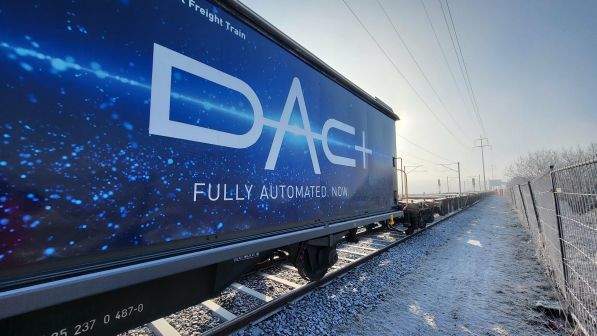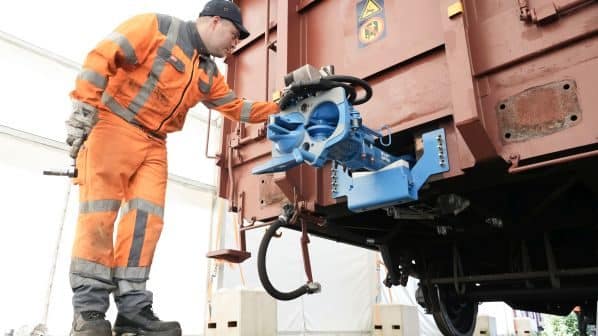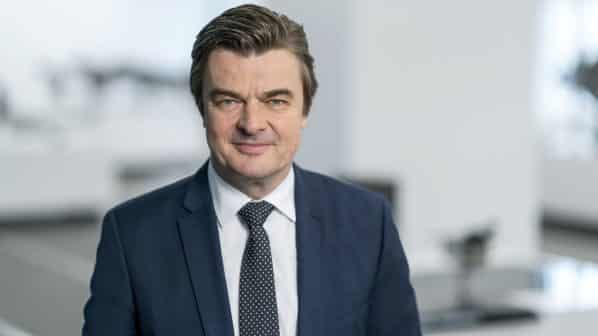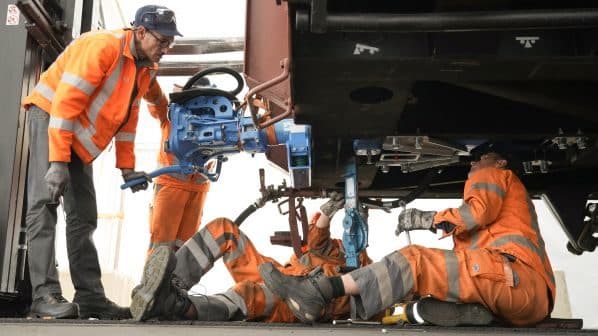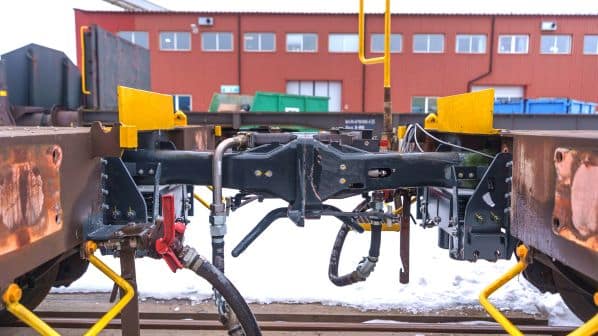THE European Commission’s Directorate General for Mobility and Transport (DG-Move) and the Europe’s Rail joint research undertaking have clarified plans for testing and deployment of the Digital Automatic Coupler (DAC) across the European wagon fleet following criticism from operating groups about progress with, and the implications of, the programme.
In a statement issued on March 30, the Federation of Independent Rail Operators (ZNPK), a Polish-based association which represents independent freight operators active in Poland, Germany, the Czech Republic, Hungary and Slovenia, said operators “strongly oppose” the mandatory implementation of DAC across the entire EU wagon fleet by 2030.
ZNPK points to what it describes as “insufficient and cursory” tests of the DAC solutions offered to date, while also pointing out that the estimated cost of €15-20bn for the full fleet rollout “is a real threat to the entire industry.”
“According to experts, the current tests have not included a long enough verification of the selected specific type of DAC in real operations, including loading and unloading operations in extreme weather conditions or in a dusty environment,” the statement says.
“They also do not take into account the limitations of wagons of specific types, such as for transporting cars. Only the definition of a new uniform standard for both the mechanical and digital/electrical parts of the solution and properly conducted tests would allow evaluation of the costs and benefits of automation.
“The prospect of DAC implementation by 2030 requires many operators to take action now regarding the maintenance of rolling stock due to the maintenance cycles in force. The lack of clear technical and construction requirements for installing DAC in older types of vehicles makes it impossible to decide whether the fleet is suitable for modernisation or decommissioning.”
In addition, the group says that prior to making a decision to implement DAC, the industry requires the following demands to be met:
- guarantees of full financing for the project
- a defined scope for equipping rolling stock with new technology
- modernisation or renewal of the fleet, and
- clear procedures for approving the conversion of fleets across the EU to eliminate the risk of reducing the size of operational fleets.
Address concerns
In a statement released to IRJ, DG-Move and Europe’s Rail attempt to address “the concerns raised by a number of stakeholders on the deployment of DAC” and emphasise that the work underway at the commission, within the supply sector and at Europe’s Rail will establish the basis for the DAC deployment strategy. They highlight several activities currently taking place. These include Flagship Area 5 of the Europe’s Rail programme, which includes research activities on DAC and its first concrete phase through its FP5-TRANS4M-R project.
The parties state that this work commenced in July 2022 and is developing, validating and demonstrating interoperable DAC equipment solutions, enabling software functionalities, and demonstrating the new digitalised/automated operational procedures aiming to increase capacity.
DG-Move and Europe’s Rail also highlight the European DAC Delivery Programme (EDDP) as key to delivering the rollout. It was introduced by Europe’s Rail as a “fully open platform” to gather together the entire rail community and the EC to develop a fast and technically and economically feasible Europe-wide DAC rollout programme with 80 companies from 20 European countries taking part.
“EDDP Sounding Boards have recently been set up to allow all stakeholders interested in the technological or operational uptake to provide their feedback, even when they are not actively participating in research activities,” the statement says.
“Thanks to the extensive preparatory work already undertaken by the EDDP, some pre-conditions for a sound DAC deployment have been identified and partially addressed.”
The parties add that work is taking place within FP5-TRANS4M-R to validate the technical requirements of a standardised DAC. Reliability and operational tests of new DAC solutions are also underway within the work programme. “To reach full compatibility and EU interoperability of DAC, there is a need to test and demonstrate first the interoperability of the systems in laboratory environments and provide a qualified technology for train tests under a controlled environment, as well as large-scale validation and demonstration,” the statement says. “Additional tests in real operations will also be needed in the near future and will be planned accordingly.”
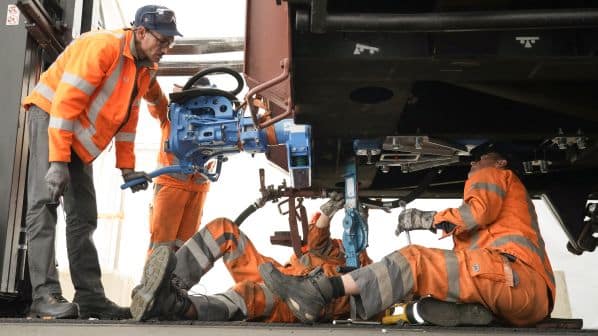
Costs
As for costs, the parties state that the EDPP estimates the overall cost of deployment at €10.6bn, pointing out that a publicly-available European Investment Plan for DAC has been developed, a first for Europe.
Published on March 23, the plan says the deployment of DAC requires investment in the purchase and installation of couplers and components, investment in infrastructure and IT systems. It presents two funding scenarios: blended finance, where there is significant debt financing under favourable and long-term lending conditions established by the European Investment Bank (EIB), national development banks and enabled by an EU budget guarantee. Public funding under this scenario is estimated at €8.8bn over 18 years as public subsidies will continue to support stakeholder financial sustainability during the early years of operation. This is more than the second scenario where it is assumed public grants will be available to cover a large portion of the Capex, with EU funding expected to cover 71.5% or €6.5bn of the cost over six years. The remaining approximately €2.5bn of funding will come from a mixture of equity and commercial bank loans.
The plan is in favour of the second scenario, stating that while both options provide positive results in terms of financial viability and break-even by 2035 for all stakeholders, in terms of the simplicity of the funding mechanism, “scenario two presents the most feasible option.”
“Without prejudice to the financial and political feasibility of the scenarios, scenario two is therefore the recommended way forward to significantly de-risk a complex undertaking per se and to secure the best return for both the private and the public investment,” the document states.
Europe’s Rail also addresses concerns over plans for migration by stating that it is working to identify all elements for a successful migration installing DAC on different wagon and locomotive types. “This will support the understanding where a retrofit makes sense and where rolling stock modernisation is needed,” it says.
“Operationally, the migration needs to take into account the current maintenance cycles, workforce capacity, industrial production capacity, future training requirements, rulebooks, and related changes or on the spot action that may be needed. More elements have also been pre-identified in the EDDP work, including, for example, those linked to infrastructure adaptation.”
In addition, it says that the close working relationship with the European Union Agency for Railways (ERA) will “ensure that clear, fast and fit-for-purpose procedures are defined to authorise DAC for different types of rolling stock once all pre-conditions are met.” The parties are also working to identify national technical rules that may impact DAC, both its physical and digital layers, with the prospect of any future inclusion of DAC in a TSI requirement.
DG-Move and Europe’s Rail conclude by reemphasising the reliance on input from operators to build harmonised operational processes for making use of DAC. “The introduction of DAC and seamless data exchange across logistics actors is a big challenge. However, the coherent, open and transparent framework set up by Europe’s Rail in cooperation with the rail stakeholders is well suited to deliver the needed research and innovation activities and to develop solutions that will bring benefits to the rail sector and the EU.
“DG-Move and Europe’s Rail will continue to invite railway stakeholders to participate, share expertise and views and take over responsibilities to prepare the foundation for a broad deployment based on the pre-conditions enumerated above. Therefore, we will continue our regular exchanges with the entire sector and expand dialogue beyond as needed to move forward in a united manner
“We are convinced that the DAC is key to improving the quality and efficiency of rail freight services and transforming the management of railways as a whole. We count on the continuous engagement of all stakeholders for the next phases of this challenging initiative to make the DAC a true common success story for growing rail freight and Europe.”
ZNPK members
CTL Logistics
CTL North
Lotos Railway
Rail Polska
Freightliner PL
Tabor Rail
Pozbruk
NKN Railway Services
Metrans Rail
Rail Polonia
